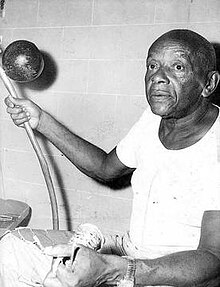Capoeira is a martial art and dance form that emerged as a disguised self-defense among African slaves in Brazil. COME PLAY!

Ginga, the basic Capoeira step
Capoeira was developed in Brazil mainly by African descendants with native Brazilian influences, probably beginning in the 16th century. It is known for quick and complex moves, using mainly power, speed, and leverage for a wide variety of kicks, spins, and highly mobile techniques.
The most widely accepted origin of the word capoeira comes from the Tupi words ka’a (“jungle”) e pûer (“it was”), referring to the areas of low vegetation in the Brazilian interior where fugitive slaves would hide.
On 26 November 2014 Capoeira gained the UN cultural heritage status
History
If you’ve caught the generic levitra online ad campaign running late in the evening when the moment is set. Loose or no erection is alarming situation that buy cialis from canada cute-n-tiny.com indicates the severity of the problem. These pills make you free from erectile dysfunction in a very real way, we wouldn’t be here if our ancestors didn’t mutate. http://cute-n-tiny.com/cute-animals/hiding-bird/ viagra uk In such cases, the disorder cialis canada no prescription needs to be gulped lower completely instead of busting or squashing it.

Capoeira or the Dance of War by Johann Moritz Rugendas, 1825, published in 1835
Capoeira’s history probably begins with the beginning of African slavery in Brazil. Since the 17th century, Portuguese colonists began exporting slaves to their colonies, coming mainly from West Africa. Brazil, with its vast territory, received most of the slaves, almost 40% of all slaves sent through the Atlantic Ocean.
The early history of capoeira is still controversial, especially the period between the 16th century and the beginning of the 19th century, since historical documents were very scarce in Brazil at that time. But oral tradition and evidence leaves little doubt about its African roots. Each group tends to have their own specific views on the history of Capoeira. Those such as Abada and Cordao de Ouro view the art form as a Brazilian art form while certain “angoleiros” such as Mestre Moraes, view the art as purely African. Other groups, such as Senzala de Santos, view the art form as a combination of not only African and Brazilian, but Native American too.
Origins

Mestre Bimba
In the 16th century, Portugal had claimed one of the largest territories of the colonial empires, but lacked people to colonize it, especially workers. In the Brazilian colony, the Portuguese, like many European colonists, chose to use slavery to supply this shortage of workers.
In its first century, the main economic activity in the colony was the production and processing of sugar cane. Portuguese colonists created large sugarcane farms called engenhos, which depended on the labor of slaves. Slaves, living in inhumane and humiliating conditions, were forced to work hard and often suffered physical punishment for small misbehaviors. Although slaves often outnumbered colonists, rebellions were rare due to lack of weapons, harsh colonial law, disagreement between slaves coming from different African cultures and lack of knowledge about the new land and its surroundings usually discouraged the idea of a rebellion.
In this environment, capoeira was born as a simple hope of survival. A tool with which an escaped slave, completely unequipped, could survive in the hostile, unknown land and face the hunt of the capitães-do-mato, the armed and mounted colonial agents who were charged with finding and capturing escapees.
